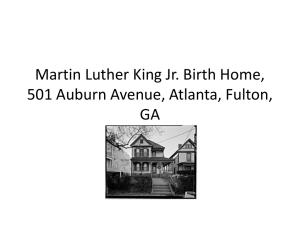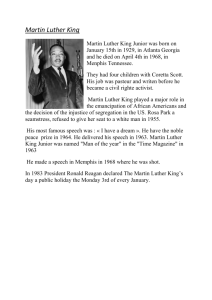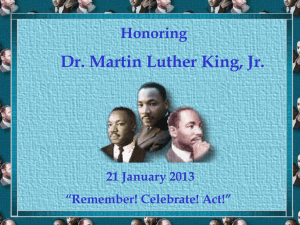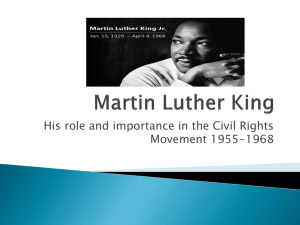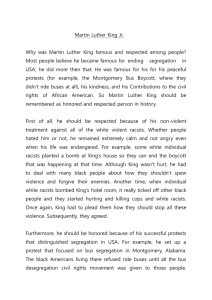Dr. Martin Luther King, Jr. Day and Ruby Bridges
advertisement
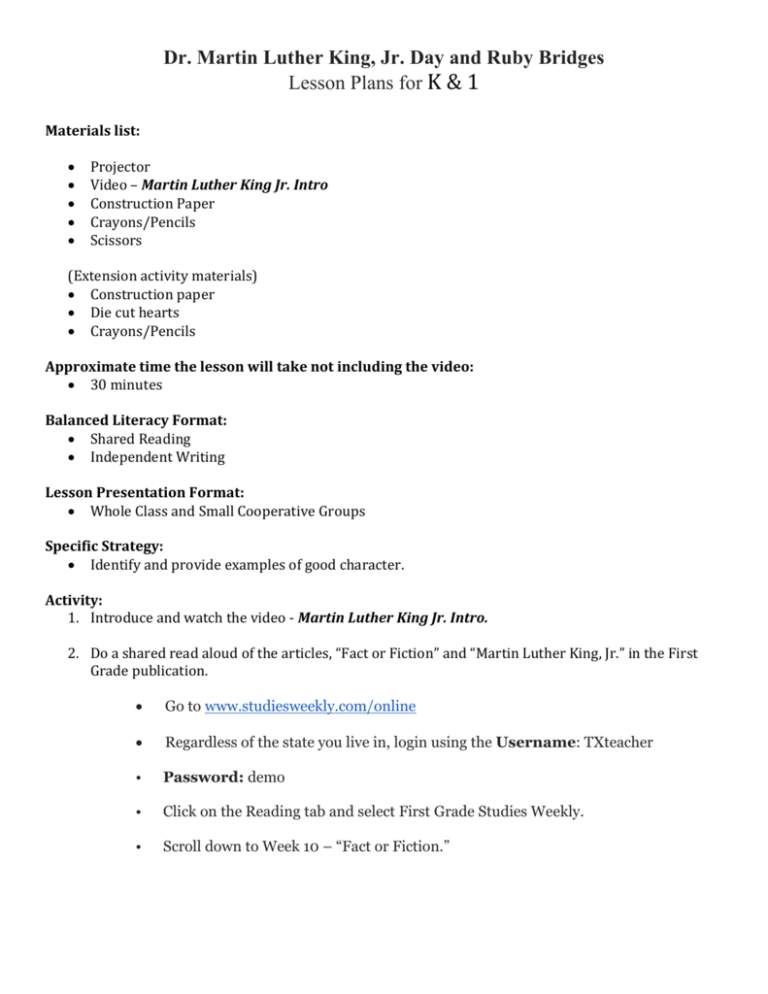
Dr. Martin Luther King, Jr. Day and Ruby Bridges Lesson Plans for K & 1 Materials list: Projector Video – Martin Luther King Jr. Intro Construction Paper Crayons/Pencils Scissors (Extension activity materials) Construction paper Die cut hearts Crayons/Pencils Approximate time the lesson will take not including the video: 30 minutes Balanced Literacy Format: Shared Reading Independent Writing Lesson Presentation Format: Whole Class and Small Cooperative Groups Specific Strategy: Identify and provide examples of good character. Activity: 1. Introduce and watch the video - Martin Luther King Jr. Intro. 2. Do a shared read aloud of the articles, “Fact or Fiction” and “Martin Luther King, Jr.” in the First Grade publication. Go to www.studiesweekly.com/online Regardless of the state you live in, login using the Username: TXteacher • Password: demo • Click on the Reading tab and select First Grade Studies Weekly. • Scroll down to Week 10 – “Fact or Fiction.” Fact or Fiction? Dr. Martin Luther King Jr. was a real person. He believed everyone should have the same rights and opportunities. He found peaceful ways to change unfair laws. He found peaceful ways to change the way some people treated African American citizens in our country. Martin Luther King A fact is something that is true. The story you read about Martin Luther King is true. He was a brave American. He helped people get equal rights. 3. As a whole class, discuss good character traits, as well as fair and equal treatment of others and identify the corresponding vocabulary. The teacher writes the words on the board or on chart paper. (Examples could include: kindness, fairness, bravery, helpfulness, responsibility, etc.) 4. Divide the class into small cooperative groups and have them trace their handprints twice, then cut out. 5. After the students have cut out two handprints, they write their examples of good character on the palms of their handprints. 6. After the handprints are completed, the teacher links them together forming a chain. (These can be used for the border of a bulletin board as well.) Differentiation: If students lack the coordination to successfully trace and cut out their handprints, the teacher can provide die cut handprints. The teacher can also provide typed character traits that students can cut out and glue on their hands. Students, who need to be challenged, can choose historical figures or people that exemplify the character trait on the palm and write their names on the individual fingers. Extension: Introduce the video, Civil Rights Activist: Ruby Bridges and ask the students to listen for a part in the video where Ruby Bridges talks about what is inside a person’s heart. As a class watch the video, Civil Rights Activist: Ruby Bridges and discuss what Ruby Bridges said about what people have inside their hearts and how that effects people’s actions. Engage students in a class discussion and ask students to identify what people should have in their hearts so that their actions are good. (Examples could include: gentleness, kindness, goodness, faithfulness, love, joy, peace, patience, etc.) Write the corresponding vocabulary on the board or chart paper. Students will select three hearts and write one vocabulary word that describes what should be in a person’s heart on each individual heart. Students fold the hearts in half vertically, then glue back to back to create a three dimensional heart. Quiz: 1. What did Dr. Martin Luther King, Jr. believe? a. He believed everyone should have the same rights and opportunities. b. He believed everyone should be brave and strong. 2. Martin Luther King, Jr. found __________ ways to fight for the rights of all people. a. angry b. peaceful Answer Key/Complexity Level: 1. A Low/1 2. B Low/1


